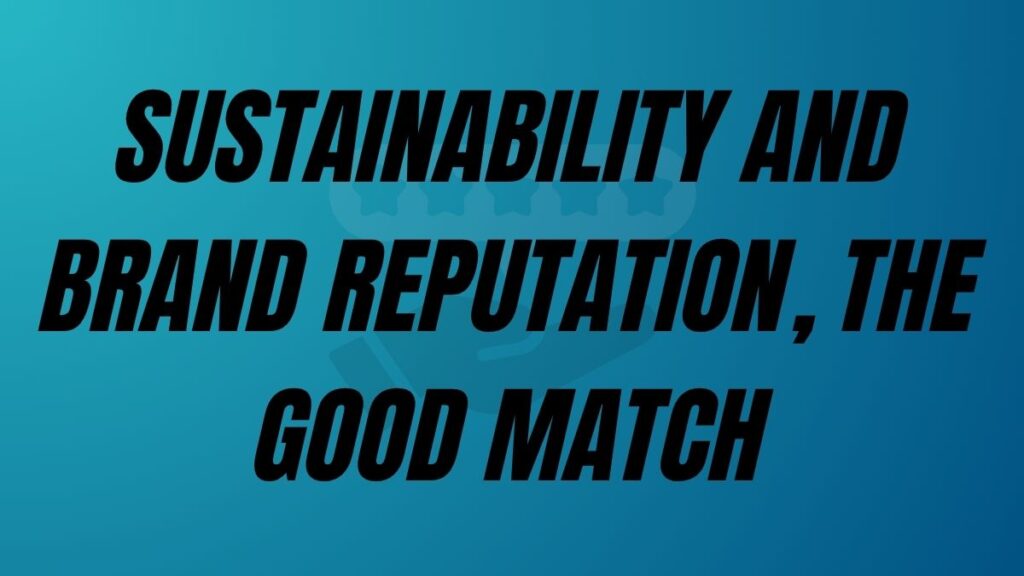No, the fight against CO2e emissions does not belong solely to the CSR manager. A quick Google search for “CSR” shows its growing importance. The search yields about 800 million results. In contrast, the “CO2 counter” query generates 141 million responses. This disparity highlights the rising popularity of corporate social responsibility (CSR).
Before we explore the true stakeholders of CSR, let’s redefine what CSR means. We will also discuss the tools available to the team responsible for this issue within a company.
Corporate Social Responsibility Challenges and Instruments
What is CSR?
Let’s start with a simple question. Should we discuss Corporate Social Responsibility, Corporate Societal Responsibility, Social and Environmental Responsibility, or simply CSR? The answer depends on the companies implementing such strategies. It also reflects the direction set by their leaders. For simplicity, we will use the term CSR for this article.
The Pillars and Dimensions of CSR
CSR relies on several pillars that define a company’s strategic framework in non-financial terms. These pillars support diverse areas within the organization. They include governance, employee relations, working conditions, consumer interactions, local ecosystems, and competition. In some cases, Human Rights serve as a crucial pillar of the CSR approach.
The emphasis on each pillar may vary based on the company’s activities. It is also essential to consider CSR from its economic, societal, and environmental dimensions.
The 7 Fundamental Principles of Corporate Social Responsibility
The ISO 26000 standard provides a framework for companies and organisations that wish to engage in a socially responsible approach and measure its performance. ISO identifies the following major principles:
- The responsibility to be accountable,
- Transparency,
- Ethical behaviour,
- Respect for stakeholder interests,
- Respect for the principle of secularism,
- Respect for international norms of behaviour,
- Respect for human rights
The pillars of CSR translate into a code of conduct. Many Anglo-Saxon companies use this code to evaluate their collaborators’ actions.
We must extend the notion of CSR to environmental concerns. The European Commission defines CSR as “the voluntary integration by companies of social and environmental concerns into their business operations and their relationships with stakeholders.” Environmental protection becomes a vital dimension of CSR. Consumers increasingly judge companies based on their environmental actions.
Having established the CSR framework and the growing importance of environmental issues, we will now explore the tools available to CSR managers.
Essential Tools for an Effective CSR Strategy
Integrating CSR into a company’s overall strategy is crucial. This alignment highlights the importance of connecting CSR with business objectives. Companies can enhance their brand image, competitiveness, and long-term performance through effective CSR practices.
Technology and innovation play vital roles in promoting CSR. Companies can use CSR management software and adopt sustainable business practices through technological advancements. Data analytics helps measure and improve CSR impact.
Open communication about CSR efforts and results is essential. Companies should publish sustainability reports, share CSR stories on social media, and engage stakeholders on CSR issues.
Regularly evaluating CSR initiatives and adapting strategies based on outcomes and stakeholder feedback is also important. This process can involve CSR audits, gathering feedback from customers and employees, and using industry benchmarks.
Comprehensive Analysis and Key Indicators for Developing a Relevant CSR Strategy
First, establish a 360-degree evaluation of impacts and stakeholder expectations. This audit phase should integrate achievements and challenges to provide a complete overview.
Anglo-Saxon companies emphasise the materiality of actions. This approach involves setting realistic and achievable key performance indicators (KPIs) that reflect a hierarchy of objectives.
Next, defining a vision and ambition makes CSR a true corporate decision. This commitment must manifest at all levels, particularly regarding engagement. Adopting an effective CSR strategy requires changes in company conduct and developing an action plan.
What tools are used for CSR or a sustainable development strategy?
First and foremost, it is appropriate to source information well, starting with public or easily accessible sources such as:
Professional networks like employer unions (CGPME, MEDEF) and professional federations often offer interesting resources and sometimes even funding.
Prioritise dialogue between all stakeholders of CSR, both internally (employees, management, shareholders) and externally (consumers and clients, suppliers, regulators, media).
The ISO 26000 standard encourages identifying individuals or organisations with whom the company has legal, contractual, financial, or regulatory obligations. This includes recognizing economic dependence at all levels.
The Government of Canada offers a CSR toolkit focused on sustainability around governance, structured decision-making, Human Resources, procurement, and marketing.
What are the specific tools used for corporate communication on CSR?
- The annual report outlines professional or commercial activities that evaluate managerial and operational actions. It reflects decisions made for the year and future plans.
- A social audit reports on employee working conditions. This audit allows for comparing findings with the company’s proclaimed reference framework.
- The code of conduct, or ethical charter, is a common policy within organizations. This policy defines the principles and standards of the company, along with the moral and ethical expectations for employees and third parties interacting with the organisation.
- Social and environmental labelling, such as Label Amplitude, plays a role in CSR communication.
- The CSR report has been a requirement since the Grenelle II law of 2010 in France. This law mandates publicly traded companies with a turnover exceeding 100 million euros or more than 500 employees to produce such reports.
- The CSR charter: it is the written translation of the commitments of each stakeholder.
Who are the stakeholders of Corporate Social Responsibility?
Which companies are concerned by CSR?
The Senate notes that since the New Economic Regulations (NRE) law of 2001, large companies have gradually built a transparency obligation.
They must communicate information on the social and environmental impacts of their activities. The PACTE law, adopted in April 2019 in France, allows companies to consider environmental and social issues in their strategies. Companies of any size can now integrate a purpose into their statutes.
The Key Stakeholders of Corporate Social Responsibility in a Company
The Executive Management
Corporate social responsibility is a corporate strategy matter that requires a sponsor at the top of the organization. This sponsorship demonstrates the authenticity and commitment to the CSR approach. In some cases, it reflects the company’s mission.
The Finance Department
Any CSR policy requires a budget for all phases, from audit to tool implementation. Some decisions may necessitate significant structural changes or the acquisition of new tools. For example, valuing the ton of CO2e within the framework of a carbon tax at 44 EUR or even 100 EUR impacts the financial direction, even if this tax remains hypothetical.
The Information Systems Department
Adopting a CSR tool requires approval from the IT Department or Information Systems Department (ISD). Companies typically have 30 to 40 official applications and up to 2000 applications. Implementing a solution to combat digital pollution in email inboxes requires ISD authorization to fit within the company’s IT landscape. The use of certain tools can significantly affect the company’s infrastructure.
The Marketing Department
CSR’s contribution to the marketing department is multi-faceted. Integrating CSR into product design emphasizes sustainable and responsible resource use. Eco-design reduces packaging, optimizes transport, and adapts material formats from vendors, showcasing responsible product marketing.
The marketing department must also meet customer expectations regarding environmental concerns. Companies must ensure transparency and authenticity in advertising to avoid accusations of “greenwashing.” Numerous NGOs have launched denunciation campaigns against the abusive use of CSR, and the French parliament has legislated against greenwashing since 2021.
Addressing societal challenges also falls under the marketing director’s responsibilities. Climate change, biodiversity, energy consumption, gender equality, and supplier economic prosperity are all themes that can differentiate a company’s products (Senate).
The Communications Department
This department plays a crucial role, as it typically oversees the production of the Annual Report in large companies. The CSR approach is vital since this department often develops and implements the company’s CSR strategy. It mobilizes employees and stakeholders around CSR issues.
The communications department seeks to enhance internal and external communication, define corporate messages, and support projects that promote customer satisfaction. Internally, it coordinates messages and maintains editorial quality across various platforms (intranets, events, internal collaborative networks).
Externally, the communications department designs and manages a cross-communication plan to share knowledge, synergies, collaboration, and team performance.
In Conclusion
In conclusion, the success of Corporate Social Responsibility (CSR) initiatives hinges on the active engagement of various stakeholders. Each group, from executive management to employees, customers, and suppliers, plays a vital role in shaping and implementing CSR strategies.
The executive management sets the tone and direction, ensuring that CSR is embedded in the corporate strategy. Employees contribute by embracing sustainable practices and providing feedback on CSR initiatives. Customers influence CSR through their purchasing decisions and expectations for transparency and ethical behaviour. Suppliers are essential partners in achieving sustainability goals, while investors increasingly demand accountability regarding social and environmental impacts.
Recognizing these interconnections among stakeholders not only enhances the effectiveness of CSR efforts but also fosters a culture of collaboration and shared responsibility.
By prioritising stakeholder engagement, companies can create more meaningful and impactful CSR strategies that resonate with their broader mission and values.
FAQs About the Stakeholders of the Corporate Social Responsibility
Who are the primary stakeholders in CSR?
Primary stakeholders include employees, customers, suppliers, investors, communities, governments, and NGOs, all of whom are affected by or can affect a company’s CSR initiatives.
Why are stakeholders important in CSR?
Stakeholders influence and are impacted by a company’s CSR activities; engaging them ensures that diverse perspectives are considered, leading to more effective and credible CSR strategies.
How can companies effectively engage stakeholders in CSR?
Companies can engage stakeholders through transparent communication, regular consultations, collaborative decision-making, and by addressing their concerns in CSR policies and reports.
What role do employees play in CSR?
Employees are vital in implementing CSR initiatives; their commitment and ethical behaviour directly influence the success of a company’s social and environmental efforts.
To find out more about Corporate Sustainability




> Discover the other blog pages
📉 How to Reduce Your Digital Carbon Footprint in B2B SaaS
💪 Overcoming B2B SaaS Challenges: Customer, GTM & Marketing
📈 How Mastering SEO Can Lead To Sustainable Growth In B2B SaaS
⏱️ How to Boost Work Productivity with Time Management Tips

